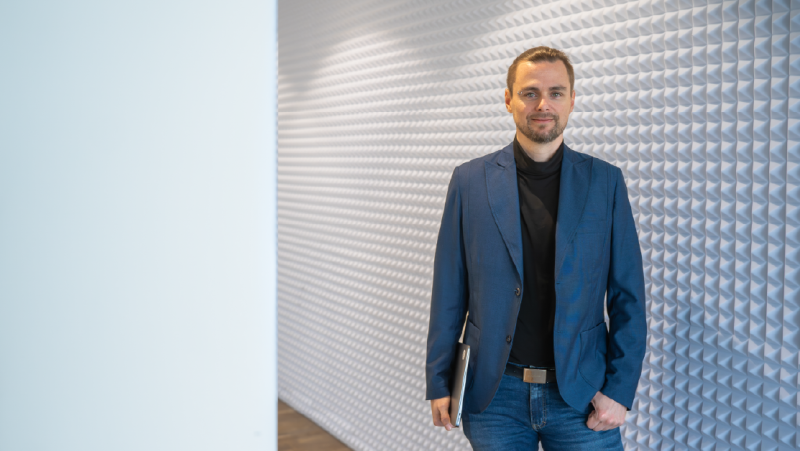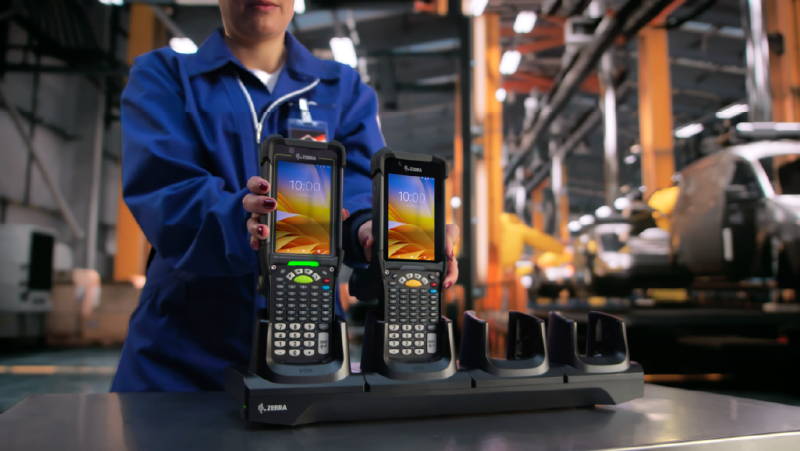German head office learned the system of logistics digitalisation from Czech Bosch subsidiary
- Trends
- Article
To get rid of physical kanban cards for production scheduling and save hours, weeks and months of time of the people who have to work with them. This was the basic idea that led to the creation of the digitalisation of heijunka in the Czech plant of automobile tech division of the Bosch company. The system, which was built by its own developers, also impressed the German head office. It was presented at the TAL 2021 conference in Pilsen by Petr Chaluš, head of the logistics innovation team, and Jan Čermák, project manager in logistics.
The word heijunka comes from Japanese. In industry, it is used for the method of scheduling production over time. Its purpose is to harmonise the production mix and eliminate downtime. Its tools are large boards and kanban cards (kanban means card or label in Japanese).
As Jan Čermák explained at the beginning, such a large board was placed at every Bosch production line. "It had two parts: in the upper part there were statements, a production plan, a Pareto analysis, statistics and a pen. At the bottom, designated for production planning, were physical cards for finished products, hundreds of dirty kanban cards. I used to do the job of production planner myself, and if I ever felt bored, I knew I could go to one of the heijunka and spend dozens of minutes with it and its cards," he said, describing how the work used to be. Bosch wanted to be rid of all that "physical stuff".
Live to the factory
"Now we are in one particular line of our factory," said Jan Čermák, surprising everybody with the virtual shift. On the screen behind him appeared the so-called plan for the levelling period, which is about 14 days long. The participants of the lecture had the opportunity to see the original plan and the actual data from the production lines, so they could easily compare how the company was doing with meeting the plan.
But the heart of the app, according to Jan Čermák, is the daily production schedule, which already works with individual digital kanban cards. It is possible to monitor the sequence of production or the progress on each day of a given period. The system is transparent, meaning that no anonymous intervention can be made without the originator being immediately identified.
Jan Čermák was also pleased by one fact that did not make his colleagues in production happy: two items on the board were lit in red. "It's great for illustration. It means that these two items will not be produced today," he commented with amusement. The system monitors everything in real time, and as soon as any unexpected setback occurs, such as the absence of a worker, the system immediately reacts and incorporates the new reality into its production cycle calculations. "This way, if we find out that we are not producing something critical, we can change plans in time," Jan Čermák relished.
We evaluate deviations not on the basis of memories or papers, but on the basis of the data we have.
Jan Čermák, Project Manager in Logistics, Robert Bosch
Memories and papers have been replaced by data
Not everything related to digitalisation is so attractive, Jan Čermák said in the part of his presentation that concerned the management of deviations from the production plan. "We want to have touchscreens, colour, but we often forget that digitalisation has another function as well," he pointed out. Deviation management is one of the less attractive parts of the Budějovice system. But it is all the more important.
The tool allows the company to identify the causes that led to products not being produced as planned. Individual "failures" are ranked in a list and wait to be evaluated by the person responsible. It has production line data and all relevant information on downtime. "We evaluate deviations not on the basis of memories or papers, but on the basis of the data we have," Jan Čermák says of the difference from similar processes in the past.
The company management can monitor the individual processes on a "dashboard", where managers can easily navigate by the colours that indicate the status of the processes. "What's green we don't have to worry about, what's red we can go into and get the details. It is simple, clear and transparent," explained Petr Chaluš, who represented the management of the Budějovice plant at the lecture.
Changes need promotion
Bosch's biggest concern in implementing the system was that they would not be able to apply it to all eighty production lines and that not all of their operators would be able or willing to adopt it. That's why the developers went out to the people in the field and informed them of their intentions. This gave them welcome feedback in advance and also gained the trust. "When we came to them and told them that we were abolishing the standards they had been working with for fifteen years, they said 'yeah, we've been waiting for you', and even some sections competed to get on the new system sooner, which was amazing for us," said Jan Čermák, describing the benefits of early awareness.
Packaging in pilot
The most technically complicated element of the digitized supply chain at Bosch's Budějovice plant is the electronic packaging ordering system. "When we pack in one-way packs, we have central supermarkets and they pack one-way sets and give them to the lines based on the physical kanban orders coming in. We are talking in the order of thousands of such orders per month," Jan Čermák described the current functioning of this section. "But then we said to ourselves: we have e-heijunka, we know what card is coming up and when. We know what went wrong when things get stuck. We are able to aggregate one queue from 80 lines," he said, explaining the birth of the new subsystem.
In one hall with twelve lines, it was launched in a pilot programme. "Requests for these sets now automatically come to this workstation where they have their own digital queue, they know who ordered what, when they have to do what to make it on time, they have an overview of capacity, we even check for missing components for the next four hours, so we prevent having to stop the line just because we don't have a pallet from the warehouse," Jan Čermák described the undeniable benefits of the innovation.
Petr Chaluš then recalled that they are planning a similar project for multi-packaging in an external warehouse. Another intended project is "just in time" deliveries of raw materials, which today are ordered by scanning, electronically by kanban, in the future it should be automatically via digital heijunka.
We embarked on this system because the head office couldn´t offer us any reasonable solution due to the complexity of the flow. Today, we are discussing that this project could be standard in other Bosch plants.
Petr Chaluš, Group Leader for Logistics Innovations, Robert Bosch
Unexpected effect
The benefits are countable and non-countable. The most significant among the uncountable, according to Jan Čermák, is the fact that the Bosch e-heijunka project was completed in September 2019. That is, a few months before the coronavirus pandemic arrived in the Czech Republic in full force. All the processes that until that time had required the presence of human power on site could suddenly be done remotely.
Among the countable ones are the savings in time and energy of workers in logistics and production. "We are able to save about 6 percent of the logistics planner´s capacity and 5 percent of the shift manager´s capacity in production," Jan Čermák said. This does not automatically mean downsizing, but rather redirecting the capacity of these people to higher value-added activities. These savings already mean a return on investment in the project in just four months.
Petr Chaluš saved the best for last: "We embarked on this system because the head office couldn´t offer us any reasonable solution due to the complexity of the flow. Today, we are discussing that this project could be standard in other Bosch plants.”
Share article
Top stories from logistics, production and IT.
Subscribe to Aimtec Insights
By registering, you agree to the processing of your personal data by Aimtec as described in the Privacy policy.
Get top stories and articles
from Logistics, Production and IT.
Subscribe to Aimtec Insights
By registering, you agree to the processing of your personal data by Aimtec as described in the Privacy policy.







